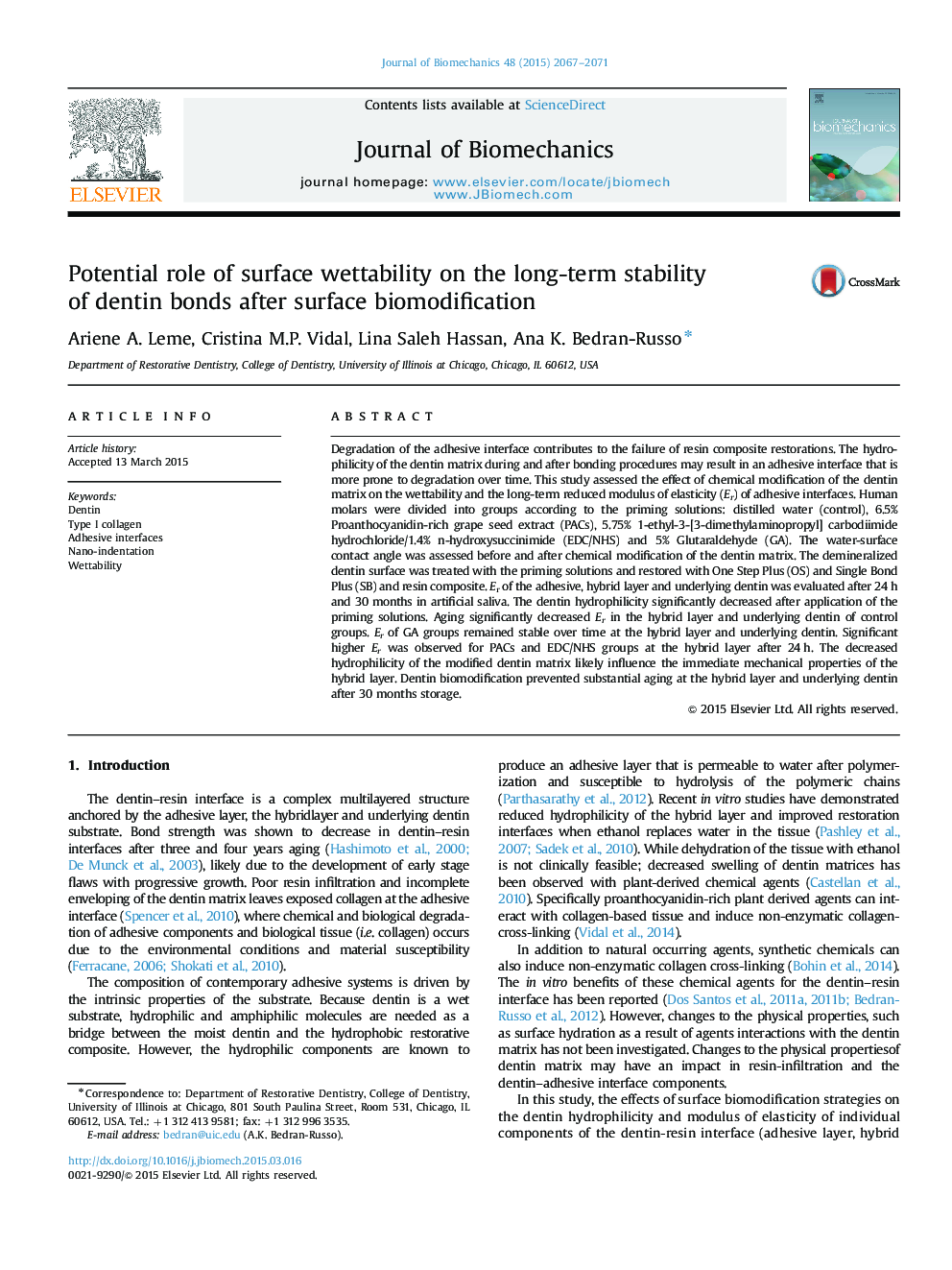| کد مقاله | کد نشریه | سال انتشار | مقاله انگلیسی | نسخه تمام متن |
|---|---|---|---|---|
| 10431425 | 910213 | 2015 | 5 صفحه PDF | دانلود رایگان |
عنوان انگلیسی مقاله ISI
Potential role of surface wettability on the long-term stability of dentin bonds after surface biomodification
ترجمه فارسی عنوان
نقش پتانسیل رطوبت سطح در ثبات دراز مدت اوراق قرضه دنتین پس از بیومواداری سطح
دانلود مقاله + سفارش ترجمه
دانلود مقاله ISI انگلیسی
رایگان برای ایرانیان
کلمات کلیدی
دنتین، نوع کلاژن، رابط های چسبنده نانو تند، رطوبت
موضوعات مرتبط
مهندسی و علوم پایه
سایر رشته های مهندسی
مهندسی پزشکی
چکیده انگلیسی
Degradation of the adhesive interface contributes to the failure of resin composite restorations. The hydrophilicity of the dentin matrix during and after bonding procedures may result in an adhesive interface that is more prone to degradation over time. This study assessed the effect of chemical modification of the dentin matrix on the wettability and the long-term reduced modulus of elasticity (Er) of adhesive interfaces. Human molars were divided into groups according to the priming solutions: distilled water (control), 6.5% Proanthocyanidin-rich grape seed extract (PACs), 5.75% 1-ethyl-3-[3-dimethylaminopropyl] carbodiimide hydrochloride/1.4% n-hydroxysuccinimide (EDC/NHS) and 5% Glutaraldehyde (GA). The water-surface contact angle was assessed before and after chemical modification of the dentin matrix. The demineralized dentin surface was treated with the priming solutions and restored with One Step Plus (OS) and Single Bond Plus (SB) and resin composite. Er of the adhesive, hybrid layer and underlying dentin was evaluated after 24Â h and 30 months in artificial saliva. The dentin hydrophilicity significantly decreased after application of the priming solutions. Aging significantly decreased Er in the hybrid layer and underlying dentin of control groups. Er of GA groups remained stable over time at the hybrid layer and underlying dentin. Significant higher Er was observed for PACs and EDC/NHS groups at the hybrid layer after 24Â h. The decreased hydrophilicity of the modified dentin matrix likely influence the immediate mechanical properties of the hybrid layer. Dentin biomodification prevented substantial aging at the hybrid layer and underlying dentin after 30 months storage.
ناشر
Database: Elsevier - ScienceDirect (ساینس دایرکت)
Journal: Journal of Biomechanics - Volume 48, Issue 10, 16 July 2015, Pages 2067-2071
Journal: Journal of Biomechanics - Volume 48, Issue 10, 16 July 2015, Pages 2067-2071
نویسندگان
Ariene A. Leme, Cristina M.P. Vidal, Lina Saleh Hassan, Ana K. Bedran-Russo,
